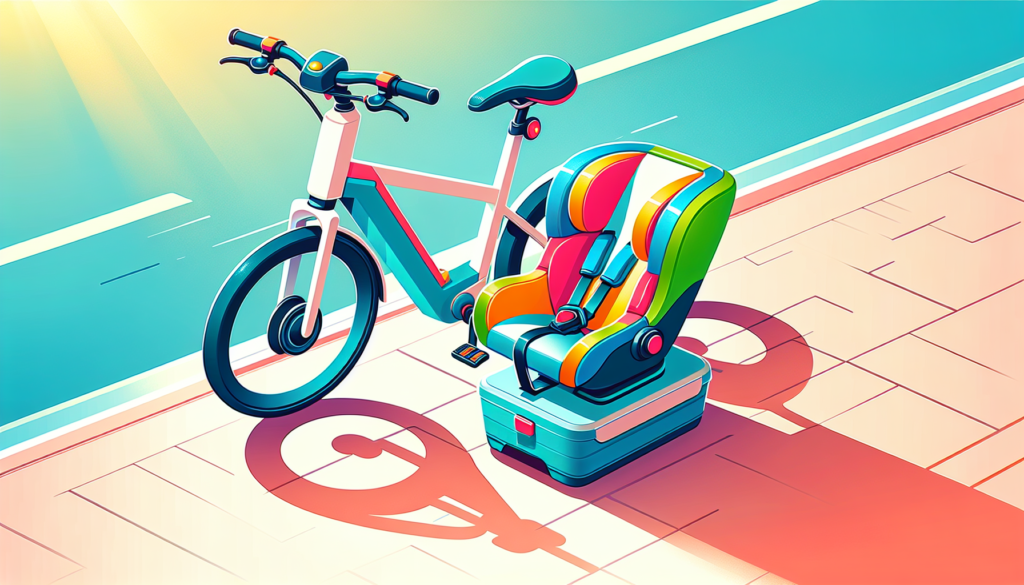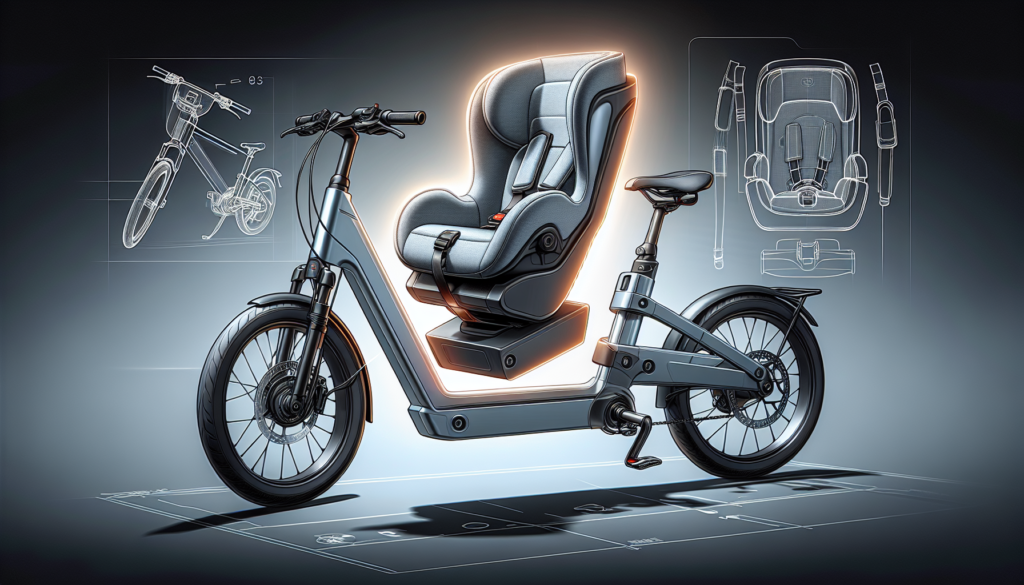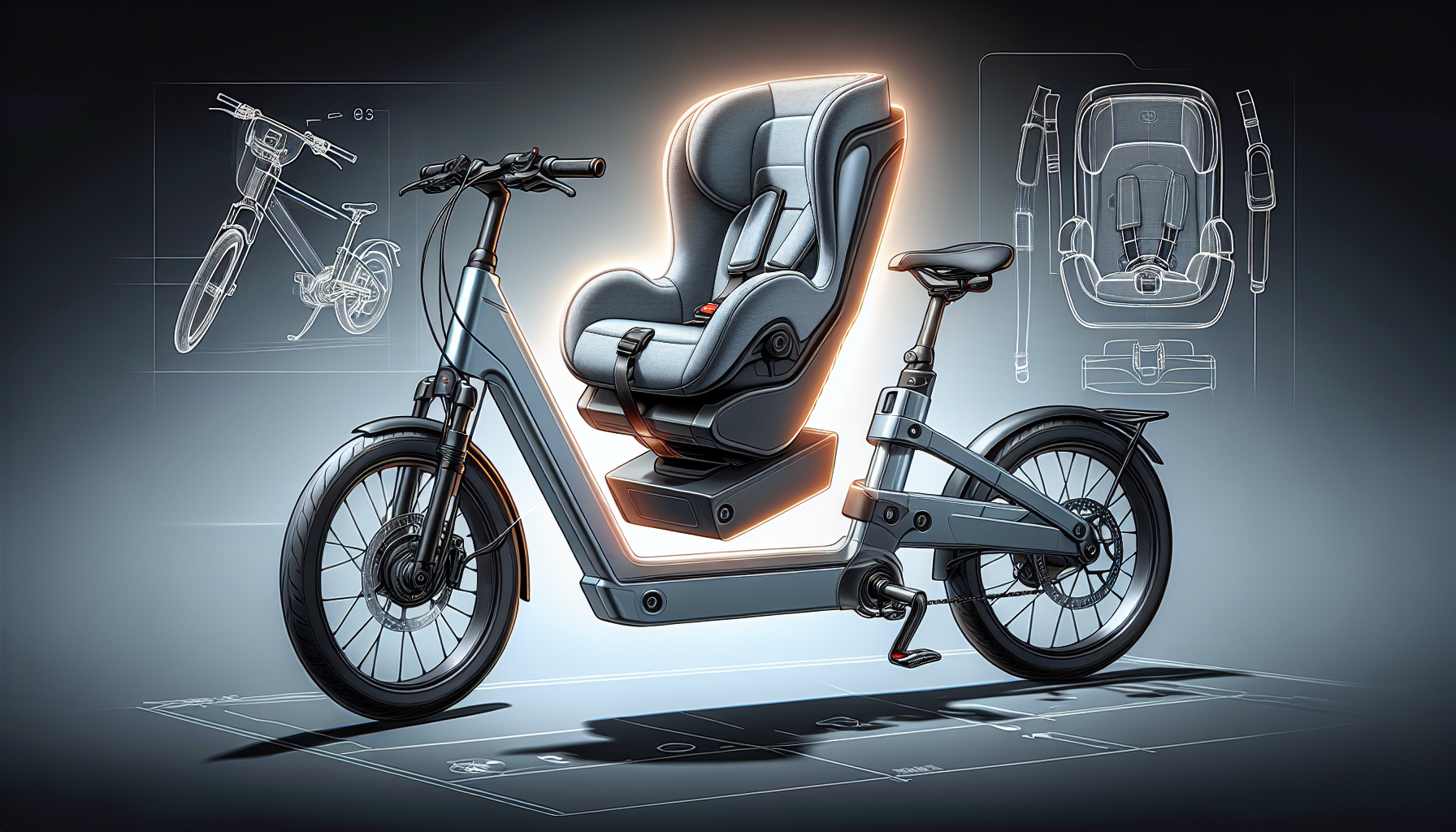Thinking about taking your little one on a fun ride with you on your e-bike? You may be wondering if it’s safe and possible to install a child seat on an e-bike. Well, good news! In this article, we’ll explore the possibilities of safely and comfortably installing a child seat on your e-bike, ensuring that you and your little one can enjoy exciting adventures together. So let’s strap in and find out all you need to know about e-bikes and child seats.

Legal considerations
As with any form of transportation, there are certain legal considerations that need to be taken into account when installing a child seat on an e-bike. Laws and regulations vary depending on the country and sometimes even the state or province you are in. It is important to familiarize yourself with these laws to ensure you are in compliance.
Minimum age requirements for child passengers are another critical factor to consider. Different jurisdictions may have different age restrictions for children riding in child seats on e-bikes. Be sure to check local regulations to determine the minimum age for your child to ride in a child seat on an e-bike.
Weight restrictions are also important to note. E-bikes have weight limits for both the rider and any additional cargo or passengers. Make sure you are aware of the weight capacity of your e-bike and choose a child seat that falls within the allowable weight range.
Finally, helmet laws should not be overlooked. Many places require both children and adults to wear helmets while riding bicycles, including e-bikes. Ensure that you and your child have properly fitted and approved helmets for your rides.
Types of child seats
There are several different options when it comes to choosing a child seat for your e-bike. Rear-mounted seats are the most common and attach to the rear of the e-bike near the seatpost. These provide a secure and stable position for your child, allowing them to have a clear view of the road ahead.
Front-mounted seats, as the name suggests, attach to the front of the e-bike. This allows you to have your child in sight at all times, promoting a sense of security and closeness. However, front-mounted seats can affect the balance of the e-bike and may be less stable than rear-mounted seats.
Trailers are another popular option for transporting children on e-bikes. These are separate compartments that attach to the rear of the e-bike and can accommodate one or more children. Trailers offer excellent stability and ample space for your child to sit comfortably.
Cargo bikes with integrated seats are a unique and increasingly popular option. These bikes have a built-in seating area or box in the front that can accommodate one or more children. They offer a fun and interactive experience for both the rider and the child.
Compatibility
When choosing a child seat for your e-bike, there are several compatibility factors to consider. The frame design of your e-bike is crucial in determining whether or not a specific child seat can be installed. Some e-bike frames may not have the necessary attachment points or clearance for certain types of child seats.
Attachment methods also differ between child seats. Some seats attach directly to the frame of the e-bike, while others use a mounting bracket or adaptor. Make sure the attachment method of the child seat you choose is compatible with your e-bike.
Weight capacity is another important consideration. Ensure that the child seat you select can safely accommodate the weight of your child. Exceeding the weight capacity can compromise the stability and balance of the e-bike, potentially putting you and your child at risk.
Stability and balance are crucial for safe riding. The child seat should not affect the overall stability of the e-bike or hinder your ability to control it. Test the e-bike with the child seat installed to ensure it remains balanced and maneuverable.
Safety precautions
Ensuring the safety of your child while riding on an e-bike is of utmost importance. Proper harnessing and securing of the child in the seat is essential. Follow the instructions provided by the manufacturer to properly secure your child in the seat, using the harnesses and straps provided.
Using additional safety accessories can provide an extra layer of protection for your child. Consider using a safety flag or reflective stickers to increase visibility, especially when riding in low light conditions. Reflective clothing or accessories for both you and your child can also help make you more visible to other road users.
Staying visible and predictable is crucial for cyclist safety. Make sure you have proper lighting on your e-bike, including front and rear lights, as well as reflectors. Follow traffic rules and signal your intentions to other road users to ensure a safe and predictable riding experience.
Inspecting the child seat regularly is important to identify any potential issues or defects. Check for any signs of wear or damage, and ensure that all screws, straps, and fasteners are securely tightened. Regular maintenance and inspections will help ensure the continued safety and reliability of the child seat.

Consulting the manufacturer
To ensure you are installing and using the child seat correctly, consult the manufacturer’s guidelines and recommendations. Each child seat may have specific instructions for installation and use, and it is important to follow these instructions to ensure the safety of your child.
Manufacturers may also offer optional accessories for child seat installation. These accessories can enhance safety, convenience, and comfort. Examples include additional padding or head supports, rain covers, or even cup holders. Consider these optional accessories based on your personal preferences and needs.
Warranty considerations are also important to keep in mind. Check the manufacturer’s warranty information to understand the coverage and any specific requirements or conditions that need to be met. Registering your child seat with the manufacturer can also ensure you receive any necessary updates or recall notifications.
Safety recommendations
Before taking your child on a ride, it is recommended to conduct test rides without a child. This allows you to familiarize yourself with the handling characteristics of the e-bike with the child seat installed. It also gives you the opportunity to make any necessary adjustments before your child joins you.
Gradual introduction with short rides is advised to allow your child to acclimate to the e-bike and the child seat. Start with shorter trips and gradually increase the duration and distance as your child becomes more comfortable. This will help build their confidence and ensure an enjoyable riding experience.
Be aware of the increased stopping distances when riding with a child seat on your e-bike. The additional weight and momentum can affect your braking performance and require more distance to come to a complete stop. Practice braking techniques and give yourself extra time and space to stop safely.
Avoiding high traffic or risky situations is another safety recommendation. Stick to quieter routes or designated bike paths whenever possible, especially when riding with your child. Avoiding heavy traffic or hazardous road conditions will help minimize potential risks and ensure a safer ride.
Choosing the right e-bike
To ensure a safe and enjoyable experience when using a child seat, it is important to choose the right e-bike. Look for sturdy frames that provide stability and durability. The frame should be able to handle the additional weight of the child seat without compromising the overall integrity of the e-bike.
Consider the power and performance of the e-bike, especially if you live in hilly or challenging terrain. Make sure the e-bike can comfortably handle the extra weight of the child seat and still provide adequate power and assistance.
A comfortable riding posture is essential, especially for longer rides. Look for e-bikes with adjustable handlebars and saddle height to ensure a proper fit. Consider any additional features, such as suspension or ergonomic grips, that can enhance comfort during your rides.
Reliable brakes and tires are crucial for the safety of you and your child. Ensure that the e-bike has responsive and effective brakes to handle the added weight. Check the condition and tread of the tires regularly to ensure optimal grip and traction.
Expert opinions
Getting insight from professionals and experienced individuals can help inform your decision and provide valuable advice. Consulting with a pediatrician can provide a healthcare perspective on the safety and appropriateness of using a child seat on an e-bike.
Cycling safety experts are also a valuable resource for information and recommendations. They can provide guidance on proper installation and use of child seats on e-bikes, as well as tips for safe riding practices.
Experiences from other parents who have used child seats on e-bikes can also be insightful. They can share their firsthand experiences, including any challenges or benefits they have encountered. Connecting with other parents can provide a supportive community and a platform for sharing knowledge and advice.
Benefits of using a child seat on an e-bike
There are several benefits to using a child seat on an e-bike. First and foremost, it is an eco-friendly form of transportation. By opting for an e-bike over a car, you are reducing your carbon footprint and promoting sustainable transportation.
Using a child seat on an e-bike also allows for bonding and shared experiences. It provides an opportunity for quality time with your child while enjoying the outdoors. Cycling together can create lasting memories and strengthen the parent-child relationship.
Promoting an active lifestyle for both parents and children is another significant advantage. Riding an e-bike with your child encourages physical activity and helps instill healthy habits from an early age. It also allows parents to continue pursuing their own fitness goals while including their child in the journey.
From a financial perspective, using a child seat on an e-bike can be a cost-effective alternative to car seats. E-bikes typically have lower maintenance and operating costs compared to cars, and the initial investment in a child seat is often more affordable than purchasing and maintaining a car seat.
Conclusion
When considering installing a child seat on an e-bike, it is essential to take into account individual circumstances, prioritizing safety and legal requirements. Familiarize yourself with the applicable laws and regulations in your area and ensure compliance at all times.
Choose the type of child seat that best suits your needs and preferences, considering compatibility factors such as e-bike frame design, attachment methods, weight capacity, and stability. Follow safety precautions, including proper harnessing and securing, the use of additional safety accessories, and regular inspections of the child seat.
Consult the manufacturer’s guidelines and recommendations, considering optional accessories and warranty considerations. Take safety recommendations into account, such as test rides without a child, gradual introduction, awareness of increased stopping distances, and avoiding high traffic or risky situations.
Selecting the right e-bike is crucial, considering factors such as sturdy frames, suitable power and performance, comfortable riding posture, and reliable brakes and tires. Seek expert opinions from pediatricians, cycling safety experts, and other parents to inform your decision and gain valuable insights.
Using a child seat on an e-bike offers numerous benefits, including eco-friendly transportation, bonding and shared experiences, an active lifestyle, and cost-effectiveness. With safety, legality, and enjoyment in mind, biking with children can be a rewarding experience for both parents and their little ones.

